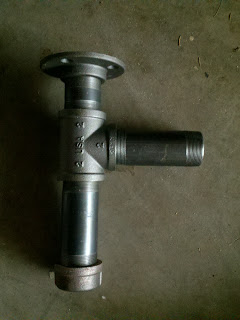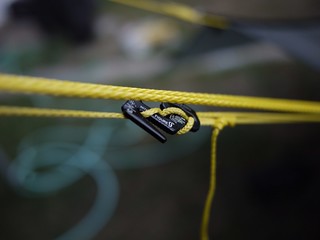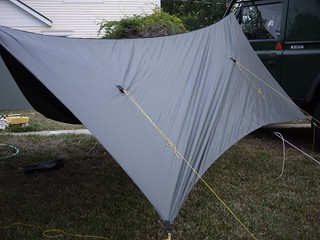The Zombie Apocalypse may soon be upon us. Now, if your like me, you understand the value of having a close quarters zombie capable weapon at hand while you take care of your daily tasks. Recently I have had the opportunity to test and review a new and innovative tool called the Trucker's Friend, a device designed as a zombie-slaying multi-tool. Think of the Trucker's Friend as a big Swiss Army knife for truck drivers, disaster, workers, and survivalists alike.
Innovation Factory, the creator of the Trucker's Friend, also makes a Firefighter Rescue Tool. This tool is almost identical to the Trucker's Friend. Being a Police Officer, I can definitely appreciate the tool's usefulness as a rescue tool. It is not possible for an Officer to carry a wide variety of rescue tools. The Trucker's Friend is a device that I believe fits the bill as a multi use rescue tool to replace a variety of devices needed to enter vehicles and structures fast. A jack of all trades, and a master of none, the Trucker's Friend is, from my testing, an excellent tool for someone who wants to be prepared for the worst scenario. Wether you need to pry, hack, or hammer your way through something, the Trucker's Friend is suited for the task.

As a wilderness survival tool I feel the Trucker's Friend does fall short of it's mark. It is a heavy tool to carry into the wilderness (unless you like throwing your back out with a heavy pack. Don't be that guy...), and the curvature of the blade makes the tool difficult to cut through even wrist size branches. The steel used in the blade went dull rather quickly during my wood chopping test, and the cutting area is relatively small. After re-sharpening, the blade went dull after several uses. Representatives from Innovation Factory advised me that the tool head is made from cast alloy 4130-4140 tool steel and is hardened and tempered to hold it's edge. I am, however, pretty abusive to my survival tools, as was the case when I was testing the Trucker's Friend. I am more likely to grab my favorite knife or small hand axe in these types of environments, and feel the Trucker's Friend is more suited to the urban survival environment.

As a roadside tool, the Trucker's Friend excels. The device is capable of dismantling roadway obstructions, pulling nails from tires, and a variety of other applications. The Trucker's Friend is definitely a tool that I will keep in my truck for when I need it. I won't be doing any home remodeling with it (there are other tools better suited) but in a pinch, the Trucker's Friend will destroy whatever I need it to (including zombie limbs). I am selective about what I keep in my truck due to limited space (no toolbox), but this is one tool I want to have with me. The Trucker's Friend is thin enough to slide under a seat, granted, it would need a means to protect the blade. Even a small snap on plastic cover would suffice here.

As a weapon, the tool actually reminds me of a medieval hand axe. Weighing in at 2.6 pounds and with a reach of almost 20 inches, it is definitely a mid range weapon. Overall, the tool was very sturdy, and the grip has ridges that prevented any kind of sliding. i would have preferred some type of knurling. and was initially skeptical of the grip Innovation Factory designed, but it seems to hold up well.
The Trucker's Friend would be complimented nicely with some sort of shoulder sling to facilitate the ever intimidating over the shoulder, ninja like sword draw. Even the biggest of zombies would cower in fear!
Interested in buying one for yourself? The Trucker's Friend retails for $59.99 and is available on Innovation Factory's website at http://innovationfactory.com/products/truckers-friend/
























































